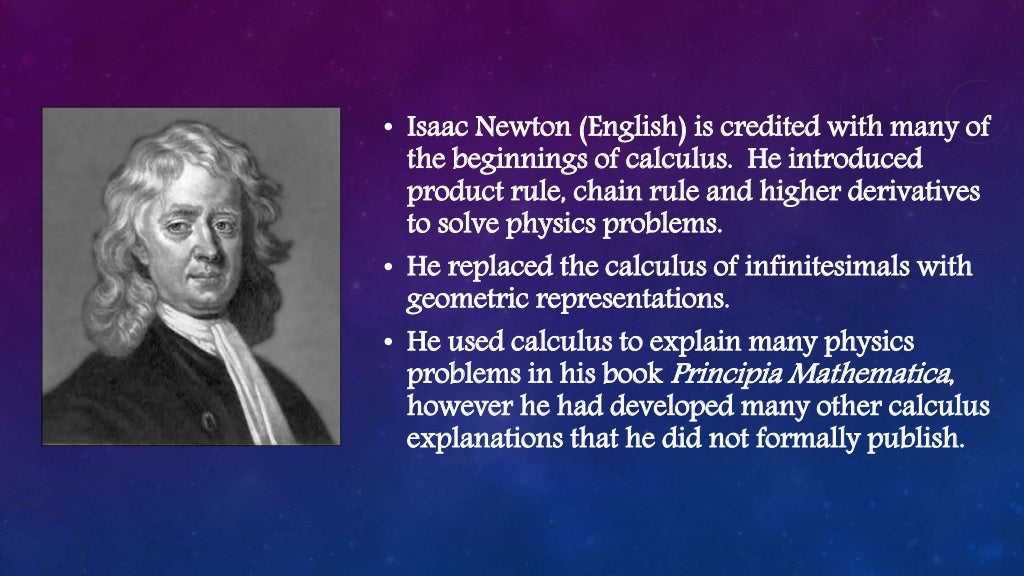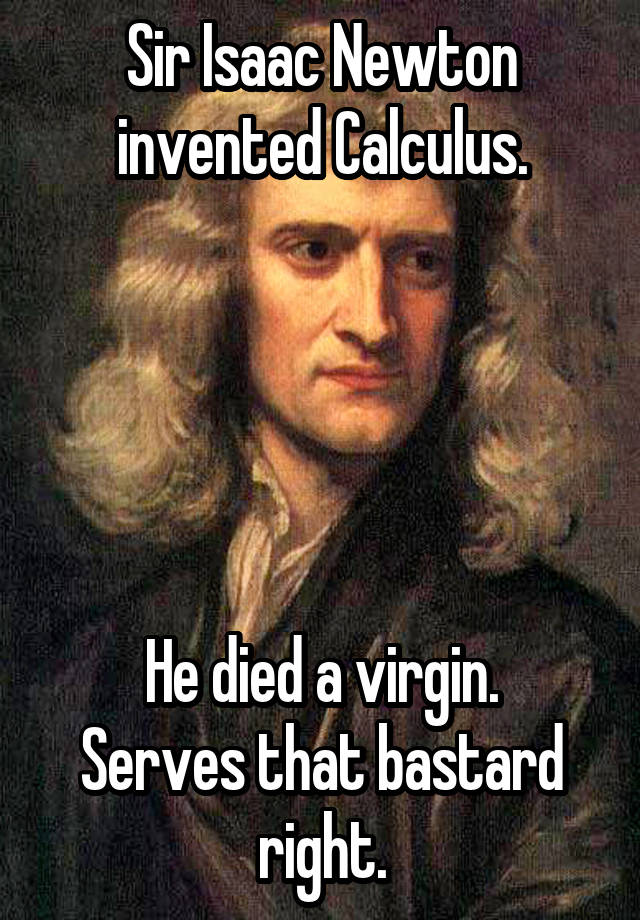

Furthermore, the moon must also apply that same attracting force toward the Earth, albeit on a lesser scale.


The force that pulls the apple down must be the same one that pulls the moon to the Earth, he decided. Things didn't exactly unfold in that manner, but Newton did get to thinking about the principles of inertia and how an airborne apple, or any object, is prevented from flying off the rotating Earth into space. Newton studied gravity, which aided in the creation of his laws of motionįinally, this was the period that birthed the Newtonian legend of the falling apple and the thump on the head that led to the deduction of gravity. More importantly, it revealed the stream of colors as unchanged – proof that colors were not modifications of white light, but that white light is comprised of all components of the spectrum. The resulting panorama allowed Newton to calculate the angle of each refracted color. He conducted an experiment in which he drilled a tiny hole in the shutter of his bedroom window, intercepted the ensuing light beam with a prism, and then placed a second prism in the path of those refracted beams. Newton also turned his attention to the study of optics, and the prevailing wisdom that every color on the spectrum was a mix of dark and white light. He analyzed color, light and the spectrum Isaac Newton dispersing light with a glass prism Photo: Apic/Getty Images
#WHO INVENTED CALCULUS 2 SERIES#
The issue at hand was determining universal equations involving fluctuating quantities, an issue that had been tackled, on a limited scale, by the French mathematicians René Descartes and Pierre de Fermat.īy the end of 1666, Newton had effectively solved this problem with a series of papers on the rules of "fluxions," now known as calculus. READ MORE: How Isaac Newton Changed Our World Newton helped develop calculusįirst, he continued the work on mathematics that had engaged his mental acuities until being shut out of Trinity. This period is now known as annus mirabilis – the "year of wonders." Along with being located a safe distance from the carriers of the horrific disease that was wiping out the population of the city, Woolsthorpe provided the sort of quiet, serene environment that allowed a mind like Newton's to journey, uninterrupted, to the farthest reaches of the imagination. As described in Gale Christianson's Isaac Newton, a few months after acquiring his undergraduate degree in the spring of that year, the 23-year-old retreated to his family farm of Woolsthorpe Manor, some 60 miles northwest of Cambridge. Because, well, it's funny to do so.When the Great Plague of London ravaged through the British city beginning in 1665, Issac Newton was a student at Trinity College, Cambridge. When matters of personal jurisdiction arise in a case, lawyers and judges often cite the case United States ex rel. This is similar to a joke citation in the legal field. I don't have access to all of those papers, but given that several replies were to this paper were published noting that this is just a restatement of the trapezoidal rule, I'm willing to bet that a number of the citations to "Tai's Model" are made in jest when a team uses calculus. Should we be scared that doctors don't know math? As of the time of this writing, Scholar notes that it's been cited 147 times. What's even more interesting about this is, as one commenter to the blog points out, this is a heavily cited paper. The total sum of these individual areas thus represents the total area under the curve. RESEARCH DESIGN AND METHODS: In Tai’s Model, the total area under a curve is computed by dividing the area under the curve between two designated values on the X-axis (abscissas) into small segments (rectangles and triangles) whose areas can be accurately calculated from their respective geometrical formulas. OBJECTIVE: To develop a mathematical model for the determination of total areas under curves from various metabolic studies.


 0 kommentar(er)
0 kommentar(er)
